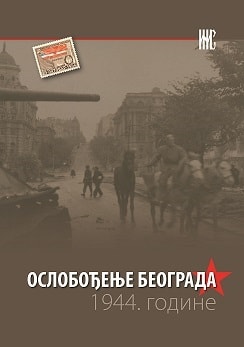Црвена aрмија на Дунаву, ослобођење Београда и тежње Срба из Румуније ка присаједињењу Југославији 1944–1945.
The Red Army on the Danube, the Liberation of Belgrade and the Desire of the Serbs from Romania to be United With Yugoslavia
Author(s): Vladimir Lj. Cvetković
Subject(s): Civil Society, Military history, Political history, WW II and following years (1940 - 1949), Migration Studies, Ethnic Minorities Studies
Published by: Institut za noviju istoriju Srbije
Keywords: Yugoslavia; Romania; Red Army; Soviet Union; Serbian ethnic minorities in Romania; Banat; Banat cliff; The Second World War;
Summary/Abstract: At the end of WWI as the Kingdom of Serbs, Croats and Slovenes and the Kingdom of Romania were founded, some 40.000 Serbs became the Serbian national minority in Romania. They were compactly settled in the border regions, partly in the Banat and partly in the Banatska Klisura, alongside the left bank of the Danube. During the inter-war period the situation of the Serbian minority wasn’t particularly good and it deteriorated during WWII and the Fascist regime of marshal Antonescu when Serbs deserted en masse from the Romanian army, not wishing to fight against „Russia”, even though it might be Communist. Almost 1.000 people, partly deserters from the Romanian army, crossed over to Yugoslavia in the last phase of the war, and joined Tito’s partisans with whom they took part in battles against Germans. After they had returned to their villages they became advocates of the idea of unification with Yugoslavia. The appearance of the Red Army on the Romanian bank of the Danube where Serbs lived in compact communities additionally strengthened that idea among the local Serbs. The participation of some Soviet officers and soldiers in the revengeful actions of Serbs and their detraction of the authority of the Romanian government, although probably isolated cases, helped the conviction to spring up among part of the minority population that they would enjoy Soviet support for such a step, the Soviets being the masters of the situation in Romania. The liberation of Belgrade and the organization of the new Yugoslav government were the signal for the beginning of the propaganda action in which some Red Army soldiers also took part and which would eventually provoke the armed counter-action of the Romanian authorities. However, the attempt to organize the Antifascist Front of Slavs (SAF) in early May 1945 showed that the attitude of the Yugoslav and Soviet authorities had changed in the meantime – most probably during the visit of Josip Broz Tito to Moscow between April 5 and 17, and in connection with the founding of the government of Dr Petru Grozda in Romania to which USSR guaranteed territorial integrity. Although the congress didn’t take place and although it foresaw no action in connection with unification of the Romanian part of the Banat with Yugoslavia, the bill for toying with this idea was footed by Serbs in Romania at the time of conflict with the Informbuerau. They were subjected to mass deportations to the deserts of Baragan, as a kind of revenge by the Romanian authorities.
Book: Ослобођење Београда 1944.
- Page Range: 168-184
- Page Count: 17
- Publication Year: 2010
- Language: Serbian
- Content File-PDF

